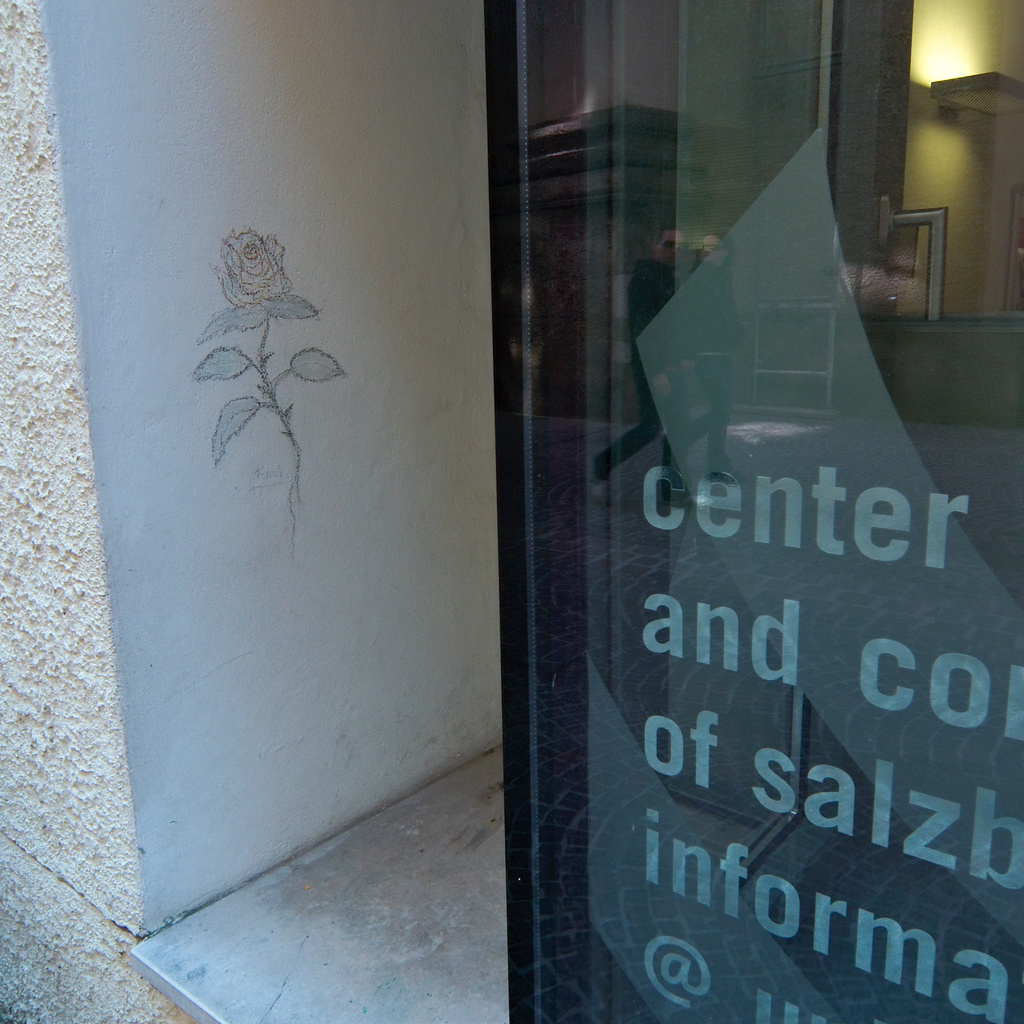
Update: Replaced the image with a new jpg version from raw, where a tad Noise Ninja USM adds sharpness. I am still in the experimenting phase with the raw conversion from the LX3.
And please remember that most of the images in this blog open in a larger version when you click on them.
I hate to bring up a techy-doo thing here, but it’s vital for this picture to have the focus on the flower-thing. Did you have to force the camera to go there? The most annoying thing about AF is the assumption that closer objects should get the focus, so most cameras with AF might not get this shot right.
Carl, I am not sure if optical unsharpness is the problem here. With f5 everything from near to far should be sharp without further ado – the letters in the window are, and the fine mirrored structure seems to be sharp as well. But the rose is a crayon drawing on a rough surface, and my postprocessing from LX3 files is still less than perfect.
Here is a 1:1 detail from the rose alone, this time with some Noise Ninja USM added:

Update: I checked the exif data again – it looks like I had let the camera choose too near points instead of selecting an AF field on the rose painting. My fault – especially as the camera has a hardware button to alleviate this kind of selection.
Carl: Shame on me, I had read your comment incompletely and only reacted on the keyword “sharpness” – the lack of which is something that haunts me since I started photography. Maybe a gearhead’s disease, and I was all too long obsessed with fine grain and lens sharpness instead of concentrating on the content of the image. Now I thought I had overcome it, but it seems that the cover is still shallow.
AF was one of my greatest wishes for a new camera when I started again with “earnest” photography in 2003/2004. The first camera was maybe a bit too simple, the LCD for composition not bright enough during most of the day, and the second camera (a Olympus 8080) had a great lens but a lousy AF when it did not find enough contrasty structures in the subject. That brought me to a DSLR, the Minolta 7D, with significant improvements but still error prone under low light conditions, which got it exchanged for the current Sony A700, much better yet not perfect, especially with fast primes wide open, but also with short focal lengths. Therefore I will get it re-calibrated, now that the LX3 proves to be valid tool.
Interesting in that small camera is the fact that it really does have enough manual controls – for the AF fields, the ISO, AE lock etc. so I can completely avoid accessing the menu out in the field. An EVF or OWF of course would improve composition, but for the cost of the shirt pocket size I do enjoy very much. Image quality quite good, way beyond what one would fear from such a small camera, but only in good light comparable with what I get from my Sony (which has a Zeiss standard zoom – it definitely delivers for what I paid).
The two sides of the photograph go nicely together, even though they seem to belong to different times of the day. The other feels like morning, the other late evening.
That’s why I like reflections in images (as long as they do not contain the photographer) – you can really play with aspects of reality.